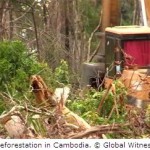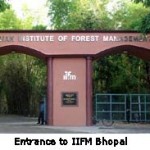
Introduction
The challenge involved in addressing the concurrent needs of Mitigation, Adaptation and Development – the MAD Challenge (Schellnhuber[1], 2009) requires an investigation into the interaction between all natural systems and people to determine how natural systems can be better utilized.
Bamboo’s ability to sequester carbon at high rates based upon its fast growth has long been an important part of its green credentials. However, given the complexities of establishing models for vegetative sinks, there are a number of questions regarding bamboo’s ability to sequester and store carbon over different time horizons. Among the complications of quantifying carbon sequestration, there are important questions regarding bamboo’s comparative advantage when compared to other fast growing trees, the length of time over which it sequesters carbon at higher rates than competing species, the role of a bamboo ecosystem in acting as a carbon store, the role that management of bamboo plays in its performance, and the durability of bamboo-derived products[2].
This publication examines these questions through modelling studies and a review of the existing work that has been carried out on quantifying carbon sequestration of bamboo systems.
Here, we publish the Executive Summary of the study:
Executive Summary
Within the range of options available to mitigate high levels of carbon dioxide in the atmosphere, forests and forestry practices have received a lot of attention. While global deforestation is one of the most important sources of carbon emissions, it is thought to be relatively easy to halt compared with other options. Through forestry practices including the expansion of forest area and improvements in forest management, forests can act as important carbon sinks. Although botanically, bamboo is a woody grass and not a tree, bamboo forests have comparable features to other types of forest regarding their role in the carbon cycle. They sequester carbon through photosynthesis, and lock carbon in the fibre of the bamboo and in the soil where it grows. However, there are also important differences between bamboo forests and other forests. Bamboo has a rapid rate of early growth and high annual re-growth when managed. The lifecycle of individual bamboo culms (between 5-10 years) is comparatively short. The products derived from bamboo are commonly used in lower durability applications than those from timber forests. Consequently, INBAR and partners set out to determine how bamboo behaves in terms of carbon storage, and how it compares to trees in its carbon sequestration performance.
This report attempts to address the main issues which influence how bamboo should be seen within the climate change context. Chapter 1 gives a global overview of bamboo and its importance to global and local economies, societies and environments and its potential in dealing with the climate change challenge, and Chapter 2 describes the mechanisms that have been created to tackle climate change, and examines how bamboo fits within these. Chapters 3 to 5 analyze to what extent bamboo could contribute to carbon storage at the plantation stand, ecosystem, and national level using calculations based on field data of bamboo and comparable tree species. Chapters 6 and 7 look at issues of management and product durability which could affect carbon storage performance.
The findings and conclusions are summarized as follows:
The comparative analysis of carbon sequestration between a monopodial Moso bamboo plantation and fast growing Chinese Fir plantation modelled for subtropical growing conditions in South East China showed that a Moso bamboo (Phyllostachys pubescens) plantation at a density of 3,300 culms/ha and a Chinese Fir (Cunninghamia lanceolata) plantation at a density of 2,175 trees/ha have comparable features regarding their rapid growth rates and climatic requirements. The study analyzed their growth patterns and used dynamic biomass and carbon models to ascertain their relative rates of carbon sequestration. The research concluded that both species had a comparable sequestration rate, but followed a different pattern.
- The calculation of the annual net carbon storage for a newly afforested Moso bamboo plantation showed a peak of 5.5 t C/ha in the 5th year. The bamboo sequestered more carbon than the Chinese Fir in the first 5 years, but less than the Chinese Fir during the next 5 years. Under regular management practices (which include stand and soil management combined with common harvesting regimes) the study found that the Moso bamboo plantation sequestrated an equal or greater amount of carbon than the Chinese Fir plantation within the latter’s first 30 years harvesting rotation as well as the second 30 year rotation.
- In contrast, if the bamboo forest wasn’t managed through annual harvesting practices, it would be significantly less effective at carbon sequestration. Compared with the first 30 year of the Chinese Fir plantation, the bamboo plantation only sequestered about 30% of the total carbon that the fir plantation sequestered. In other words, fir is likely to be much more effective at sequestering carbon than bamboo when a bamboo plantation is unmanaged and un-harvested.
A literature review confirmed that the level of carbon stored in Moso bamboo forests and in Chinese Fir in various provinces of China are indeed comparable.
For tropical conditions, the carbon sequestration capacity of Eucalypt plantations was compared to sympodial Ma bamboo (Dendrocalamus latiflorus) in the same area. This is a suitable comparison due to their relative rapid growth rates and similar climatic requirements. The study analyzed their respective growth patterns and calculated their relative carbon sequestration capacity. The results indicated that both plantations had comparable carbon sequestration capacity and performance.
- Under regular management practices with annual harvesting for the bamboo, the Eucalypt plantation outperformed the bamboo in the first 5 years until it was cut, to be replaced by a new Eucalypt plantation. In the second 5 years, the Ma bamboo started to outperform the Eucalypt plantation.














